 Cover of A Charlie Brown ChristmasChristmas TV has always been a mishmash of old well-worn now traditional favourites demanded by viewers year after year, and a slew of mainly awful new festive viewing experiences. Among the movies, both festive and not, shown at this time of year there is a creation we call the Christmas Television Special. The criteria for inclusion in my list is stupidly simple: it must be made for Christmas and it must be made for television. The special bit is the rather superfluous part that designates this episode is different from others. Isn't every episode supposed to be? The Christmas part doesn't necessarily mean it has to have a Christmas theme, it just needs to made and scheduled for a Christmas release, but the television part is an absolute rule even though certain Christmas specials, such as the "Kung Fu Panda Christmas Special" and the "Beauty and the Beast: The Enchanted Christmas", are clearly spin-offs from popular movies.
Cover of A Charlie Brown ChristmasChristmas TV has always been a mishmash of old well-worn now traditional favourites demanded by viewers year after year, and a slew of mainly awful new festive viewing experiences. Among the movies, both festive and not, shown at this time of year there is a creation we call the Christmas Television Special. The criteria for inclusion in my list is stupidly simple: it must be made for Christmas and it must be made for television. The special bit is the rather superfluous part that designates this episode is different from others. Isn't every episode supposed to be? The Christmas part doesn't necessarily mean it has to have a Christmas theme, it just needs to made and scheduled for a Christmas release, but the television part is an absolute rule even though certain Christmas specials, such as the "Kung Fu Panda Christmas Special" and the "Beauty and the Beast: The Enchanted Christmas", are clearly spin-offs from popular movies. The obscure writings of Jamie Clubb. "It rained last week because God was crying about how sceptical you are, Jamie" - Sarah Chipperfield
Thursday 23 December 2010
The Christmas TV Tradition
 Cover of A Charlie Brown ChristmasChristmas TV has always been a mishmash of old well-worn now traditional favourites demanded by viewers year after year, and a slew of mainly awful new festive viewing experiences. Among the movies, both festive and not, shown at this time of year there is a creation we call the Christmas Television Special. The criteria for inclusion in my list is stupidly simple: it must be made for Christmas and it must be made for television. The special bit is the rather superfluous part that designates this episode is different from others. Isn't every episode supposed to be? The Christmas part doesn't necessarily mean it has to have a Christmas theme, it just needs to made and scheduled for a Christmas release, but the television part is an absolute rule even though certain Christmas specials, such as the "Kung Fu Panda Christmas Special" and the "Beauty and the Beast: The Enchanted Christmas", are clearly spin-offs from popular movies.
Cover of A Charlie Brown ChristmasChristmas TV has always been a mishmash of old well-worn now traditional favourites demanded by viewers year after year, and a slew of mainly awful new festive viewing experiences. Among the movies, both festive and not, shown at this time of year there is a creation we call the Christmas Television Special. The criteria for inclusion in my list is stupidly simple: it must be made for Christmas and it must be made for television. The special bit is the rather superfluous part that designates this episode is different from others. Isn't every episode supposed to be? The Christmas part doesn't necessarily mean it has to have a Christmas theme, it just needs to made and scheduled for a Christmas release, but the television part is an absolute rule even though certain Christmas specials, such as the "Kung Fu Panda Christmas Special" and the "Beauty and the Beast: The Enchanted Christmas", are clearly spin-offs from popular movies. Friday 17 December 2010
The Christmas Movie Tradition
The Christmas movie is a big tradition in the USA. We get them over here, but they are often American films for that very same reason. Nevertheless, I grew up amid the excitement of new films being released on the cinema and plenty of old greats being shown over the holiday period. However, as I grew up I became more cynical about it all. There is an overwhelming side to Christmas that is enough to put you off the whole idea altogether. It is more than commercialism; rather it is a desire to be unashamedly tacky, sickly sweet, incredibly drunk and sanctimonious. People, particularly families, often become aggressive in their desires to “be together” or “enjoy themselves”. Therefore, it wasn’t long before I started to realize that most Christmas films, like most Christmas songs, are pretty awful. "Elf" has to be one of the most over-rated family films of all time and my high hopes were severely dashed with "Bad Santa". Most Christmas films are shown through the narrow eyes of North Americana and feel a desire to self-righteously show us “the true meaning of Christmas” via Santa Claus and miracles.
Below are my choices for the best feature films made with a Christmas theme. What constitutes a Christmas film you may ask? It is certainly a question I put to people when I name some of my choices. It seems to me that many people are either overly conservative or liberal in their selections. The conservative lot seem to regard only films that have Christmas in the title or feature Santa Claus or bang on about the holiday spirit to be the only movies to make the definition. Others refer to the huge expanse of films that are traditionally shown over the Christmas period on TV. I cannot remember a Christmas of my childhood that didn’t pass without “Superman”, “The Great Escape”, “Chitty Chitty Bang Bang” or “Star Wars” being shown on TV. So I take the middle line with my sometimes alternative and sometimes mainstream selection of Christmas movies.
“Gremlins” is the perfect anti-Christmas picture. I am shocked by the common reaction to most people I say Gremlins is one of my all-time favourite Christmas films. Most people don’t seem to consider it a Christmas movie. This is despite the fact it is set over the whole Christmas period, never stops referencing Christmas, has well-known Christmas songs on its soundtrack, has most scenes featuring snow or Christmas decorations and the whole story is based around the theme of the irresponsible giving of pets as Christmas novelties. “Gremlins” is savage in its comedy, sending up the consumerism and the excuses people use to go wild over the festive period. The Scrooge character, Mrs Deagal, gets no chance of redemption at the hands of these evil little green monsters that fire her straight out of her window after messing with her electric stair lift. The film is also laced with the bitter side of Christmas via Phoebe Cates’s Kate character who reminds us that the suicide rate goes up over this time of year and reveals a dark story of how she discovered there was no Santa Claus.
Young Sherlock Holmes
Again, the title doesn’t immediately evoke thoughts of Christmas, but it works so well as a winter holiday movie for the family. From the opening titles with its chirpy upbeat score following the shocking death of the film’s first victim via Jim Henson puppetry into the wonderful narration of Michael Hordern (perhaps one of the best voiceovers in cinematic and television history), the film just seems to hit all the right places for some Christmas escapist fun for all ages. Sherlock Holmes is synonymous with the Victorian era, perhaps the historical time most associated with Christmas. Young Sherlock Holmes is certainly a departure from the usual Sherlock Holmes affair, being an imaginative “What if Sherlock Holmes met Dr Watson at School?” story rather than an attempt to adapt any of Sir Arthur Conan Doyle’s work. Nevertheless, it provides all the usual fun and frolics of an Amblin film (the production company that brought you Gremlins) and a Chris Columbus (first two cosy Harry Potters) script.
The Muppet’s Christmas Carol
Sadly Jim Henson had passed away by the time this film was produced but it did his memory proud. This is perhaps the best Muppet movie made and also one of the best adaptations of Charles Dickens’s famous story. Of course, despite a peculiar creepiness that I have always felt was present with the Muppets, this picture largely diminishes the sense of ominous threat that was present in all adaptations prior to this one. However, it more than makes up for it with an excellent performance by Michael Caine as Ebenezer Scrooge, some brilliant songs and the general wacky genius that makes the Muppets so enjoyable to watch.
Scrooge – A Christmas Carol (1951)
This is the standard that all adaptations of “A Christmas Carol” were and still are judged. Despite being a flop at the cinema in the US it quickly became a TV favourite in the 1960s. It is as much a tradition in many households as Christmas trees and decorations. Alistair Sim made the role of Ebenezer Scrooge his own, so much so that a good number of actors who took on the role afterwards seem to be inadvertently imitating him. This was later reinforced when Sim leant his distinctive voice to the character of Scrooge again in the 1971 Oscar winning animated adaptation. Michael Hordern also reprised his role of Jacob Marley/Marley’s Ghost. Hordern seems to regularly crop up in many of my Christmas choices. Here he is as intimidating as any villainous sidekick when playing the living Marley and darkly oppressive when he plays the spectral harbinger of doom. The film changes only a little of Dickens’s story, but it is a welcome addition, helping to better explain how Scrooge and Marley emerged through greed and cold-hearted opportunism. There is also a believable performance by George Cole as the young Scrooge. He doesn’t physically resemble Sim much, but his interpretation of the character is spot on.
The Nightmare Before Christmas
It’s amazing to think that this stop-motion animated film was originally released over Halloween. Now the Christmas angle just seems to have eclipsed the whole concept that the main characters come from Halloween Town. This was the film that Disney apparently wanted Tim Burton to make and even financed his pet project “Ed Wood” into the deal. It is full of great songs and really establishes the Burton look of child-like Gothic. However, not nearly enough credit is given to the film’s actual director, Henry Selick. It is arguable that although Burton wrote and produced the picture, the stylization of it is as much Selick’s. For proof of this see “James and the Giant Peach” and 2009’s darkly wondrous “Coraline”. “The Nightmare Before Christmas” still seems edgy and there is easily enough on offer to satisfy the adults in the family as well as the children.
Rocky
Several of the Rocky films (Rocky, Rocky IV, Rocky V and Rocky Balboa) are based around the Christmas period and heavily reference it. I don’t know if it is a Philadelphia thing or Stallone was playing with the idea of miracles, but it works. Rocky IV, the campiest and most financially successful of the whole series, even stages the final scene, Rocky’s match, on Christmas Day in snowy Russia. However, the first film, which is stands alone as a true cinematic classic, delivers exactly the right type of Christmas tale Americans audiences love. The final scene and match in this instance happens on New Year’s Day, and the fact that Rocky doesn’t win makes it all the more poetic.
Trading Places
Christmas is a time for fairy tales. Disney knows this and so do the traditional British pantomimes. So how about an adult rendition of the Prince and the Pauper? Set over the Christmas period, the film is layered with enough examples of Dickensian themes: gaps between the classes and the juxtaposition of 1980s greed (it was made in 1983) with “salt of the earth” compassion. Actors/comedians Dan Ackroyd and Eddie Murphy not to mention director, John Landis, are at the top of their game in this picture. There is also memorable supporting performances put in by Ralph Bellamy and Don Ameche as the villainous US aristocrats, Mortimer and Randolph Duke and Denholm Elliott is wonderful as the ever-loyal Coleman. However, the star of the show is undeniably Jamie Lee Curtis. I have worked with Ms Curtis on the film “Fierce Creatures” and there is little getting away from her larger than life personality, which makes most of her performances memorable. Before this picture she seemingly typecast as a scream queen. Here she played the best “tart with a heart” caricature ever seen on the silver screen. The humour comes thick and fast without descending into semi-spoof territory and the film’s ending is fulfilling in a 1980s sort of way without becoming too cheesy.
Life of Brian
This is one of the best comedies ever written and will make that list for sure. Hell, if they can put “Jesus Christ Superstar” on over a festive season, when it is technically more of an Easter musical, I can have the pinnacle of Monty Python’s greatness. The film begins with the birth of Christ and his next door neighbour, Brian. Okay, we all know that 25th December date was stolen from other pre-Christian religious festivities, so this is the only film that remarks on the nativity without featuring the celebration that now surrounds it. If most films that centre on the life of Jesus focus on spirituality then this is a wonderful counterbalance that sends up humanity as a whole and revels in all its ageless mortal flaws.
Arthur
This film seeps class. It is considered by many to be one of the funniest comedies ever made, it won John Gielgud, in one of his most memorable roles, an Oscar for best supporting actor and it features a collaborative theme song that is a mainstay on many easy listening radio channels. Like “Trading Places” it deals with the 1980s US aristocracy and contrasts it with the working classes. Much of the story is set over the Christmas period and Arthur’s perpetual drunkenness helps to remind us of another less savoury tradition of the holiday period.
If you enjoyed this article please vote for it on Dooyoo, Ciao and Helium.
Don't forget to check out Jamie Clubb's main blog www.jamieclubb.blogspot.com
Related articles
- The Best Christmas Movies for Children (brighthub.com)
- The New Christmas Canon: Gremlins At The Music Box (chicagoist.com)
- Watson's Top 10 Christmas Films (superdps.wordpress.com)
Wednesday 17 November 2010
Reviving a Creepy Tradition
Simply titled "Ghost Stories: Volume Two", this audio book is distinctly different from other classical collections I have listened to or read in the past. The reason for this being that each of the four tales contained within are the works of M.R. James. Despite an undeniable legacy and influence over the genre in the 20th century, James's tales are still very different from what we expect in the horror or, more specifically, the ghost short story genre. They often have the superficial criteria of a contemporary pompous upper-middle class scholar uncovering an ancient object in a remote area and subsequently becoming haunted by a supernatural entity or curse. This has become known as Jamesian. They are also not particularly horrifying, not by today's standards, not by the standards of his day and not for the standards of Victorian ghost or horror stories that preceded them. These are stories that create atmosphere and imply an unknown menace, which are perfect for the function James originally intended them: as fireside tales to be told at night to a group of gathered friends.
Friday 12 November 2010
Justify this! A review of "Mistakes were Made (but not by me)"
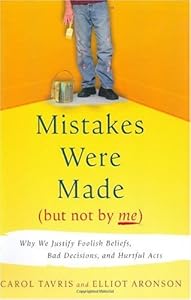 Cover via Amazon
Cover via AmazonThis is the second book I have read that looked at the nature of human error. The first one, "Being Wrong: Adventures in the Margin of Error" by Kathryn Schulz, was a half-philosophical work that looked at the whole scope of wrongness and our relationship with it. Although scientifically sound, Schulz's excellent work was far more to do with making peace with mistakes. Similar aspects are also present in Carol Tavris and Elliot Aronson's joint work, "Mistakes Were Made (but not by me)", but this is a far less sympathetic book driven by the passion of two straightforward and eminent psychologists who focus specifically on the human reaction to personal error. Tavris was given a special award for her working contribution towards the empirical scientific sceptical movement and "Mistakes Were Made (but not by me)" seems destined to be the sceptic's go-to work on the phenomena of confirmation bias.
Saturday 30 October 2010
Thursday 28 October 2010
The Best Horror Through the Ages
 Image via Wikipedia
Image via Wikipedia
Seeing as we are getting close to Halloween I thought I would post up some suggestions for your viewing pleasure. These are what I regard to be some the greatest scary movies of all time. Debate, discuss, whatever...
Wednesday 20 October 2010
“The Perfect Nazi” could be described as the darker side of tracing one’s family tree. Imagine discovering that a close blood relative, your grandfather to be exact, was a high ranking member of the SS? For Martin Davidson, a man who has enjoyed senior positions at the BBC, RDF and again at the BBC in charge of history, the challenge and revelation must have been considerable. For most of his life, Davidson grew up knowing that his grandfather had served in Germany during the Nazi regime. Little was ever spoken to him about his mother’s father, Bruno Langbehn’s involvement with the Nazi party.
Wednesday 13 October 2010
Strength Through Error - Review of Being Wrong by Kathryn Schulz
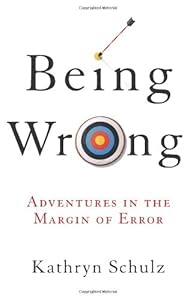 Cover via Amazon
Cover via AmazonWhen was the last time you admitted to being wrong about anything? It is a question that journalist Kathryn Schulz has pondered for some time, so much so that her book, "Being Wrong: Adventures in the Margin of Error", appears to be a veritable bible on something she calls "wrongology". This work investigates, dissects and embraces the whole concept of wrongness, letting no one off the hook in its research and conclusions. Being fully aware of the many ways that error has helped shape the way we progress as a species, she takes first half of Alexander Pope's famous idiom "To err is human" literally and explores the truth of this statement at great length. As Schulz, explains in her opening chapters this is not book about forecasting errors, but more about how we as deal with errors and how we can use them to our advantage.
The book is divided into four parts: "The Idea of Error", "The Origins of Error", "The Experience of Error" and "Embracing Error". Each part is divided into different numbers of chapters. The first and fourth parts only have two chapters a piece and act introductory and conclusive bookends to the whole piece. Schulz's tour of the way error affects and changes us as human beings is contained within the two meatier parts, containing six and five chapters respectively. Despite coming under the category of "Popular Psychology/Philosophy" the whole book is handled like a scholastic work. It is footnoted on many of its pages to provide fascinating additional information on certain case studies and has meticulous endnotes to provide all of the book's reference material.
Sunday 3 October 2010
Ten Best True Crime Books Currently Available
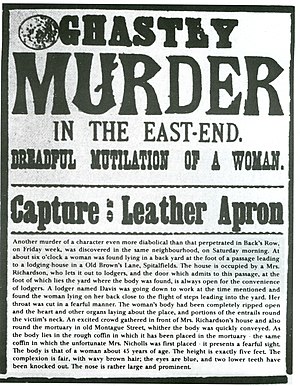 Image via WikipediaTrue crime, at its best, is a fascinating combination of historical investigation dominated by primary source evidence often with strong aspects of prominent scientific psychological theory and an understanding of cultural dimensions. Their authors range from thorough historians who have enough discipline to not be led away by confirmation bias or too many preconceived ideas and prejudicesto objective interviewers who gain a unique insight into their subject's personality. Unfortunately the majority of books that go under title "true crime" are actually close cousins of the ghost story or urban legend. They range from tabloid style reports on cases to outright fabrications to ghost-written romantacized autobiographies of criminals trying to capitalize on their parasitic and rather sad lives. However, we shouldn't be too hard on all these modern day evolutions of penny dreadful compilations. Often they are the tantilizing baits that draw us in originally.
Image via WikipediaTrue crime, at its best, is a fascinating combination of historical investigation dominated by primary source evidence often with strong aspects of prominent scientific psychological theory and an understanding of cultural dimensions. Their authors range from thorough historians who have enough discipline to not be led away by confirmation bias or too many preconceived ideas and prejudicesto objective interviewers who gain a unique insight into their subject's personality. Unfortunately the majority of books that go under title "true crime" are actually close cousins of the ghost story or urban legend. They range from tabloid style reports on cases to outright fabrications to ghost-written romantacized autobiographies of criminals trying to capitalize on their parasitic and rather sad lives. However, we shouldn't be too hard on all these modern day evolutions of penny dreadful compilations. Often they are the tantilizing baits that draw us in originally.Below is a list of 10 particularly significant books that come under this genre and, for the most part, will steer you in the right direction to get the most out of this landmine filled area of non-fiction reading...
Friday 1 October 2010
Tony Curtis: The Man Who Played Hollywood and Won! (The Icon Series)
 Image via Wikipedia
Image via Wikipedia The death of Tony Curtis (June 3, 1925 – September 29, 2010) inspired me to think of his place as an icon in my life. I never met the man, but he is very much a fabric of my culture due to his starring role in the film “Trapeze”. I did meet his daughter, the actress Jamie Lee Curtis, on the set of “Fierce Creatures”, but that was about as close I got to an individual who – along with Charlton Heston, John Wayne, Clint Eastwood, James Stewart and, more than anyone, Burt Lancaster – represented “my people” in a good light on the silver screen.
Thursday 26 August 2010
Finally Rational Self-Help!
 Cover via AmazonSceptics are often considered to be life's party poopers. Damn them and their rationality, sense of logic and reason! Not satisfied with debunking everything from reptoid conspiracy theories to hippy herbal cures in recent times the critical eye has been cast over the self-help movement. According to Professor Richard Wiseman much of the advice being touted by the gurus of positive motivation is based on little scientific evidence. In fact, many anecdotal stories told by these gurus relating to certain experiments used to justify their methods are either only partially reported or didn't happen at all. So, you might think, if this isn't raining on the proverbial happy parade than what is. Well, according to Wiseman much of these self-help
Cover via AmazonSceptics are often considered to be life's party poopers. Damn them and their rationality, sense of logic and reason! Not satisfied with debunking everything from reptoid conspiracy theories to hippy herbal cures in recent times the critical eye has been cast over the self-help movement. According to Professor Richard Wiseman much of the advice being touted by the gurus of positive motivation is based on little scientific evidence. In fact, many anecdotal stories told by these gurus relating to certain experiments used to justify their methods are either only partially reported or didn't happen at all. So, you might think, if this isn't raining on the proverbial happy parade than what is. Well, according to Wiseman much of these self-help Saturday 21 August 2010
Henry V, an English icon revisited (the icon series)
 Image via Wikipedia
Image via WikipediaHenry V (16 September 1386* – 31 August 1422) is an English icon embedded in our cultural identity. This is largely due to William Shakespeare’s immortal play “The Chronicle History of Henry V” and its two prequels concerning his father’s reign. The medieval king from the house of Lancaster
Friday 13 August 2010
That Day Again
| Friday the 13th did not even have a completed script when Sean S. Cunningham took out this advertisement in Variety magazine (Photo credit: Wikipedia) |
![Cover of "Friday the 13th Uncut [Blu-ray]...](http://ecx.images-amazon.com/images/I/51BXmNcj9zL._SL300_.jpg) Cover of Friday the 13th Uncut [Blu-ray
Cover of Friday the 13th Uncut [Blu-raySo, we arrive on the day when superstition runs rife in the western world. 13 witches in a coven, Judas Iscariot, the treacherous member of JC’s gang, made the number of participants at The Last Supper 13, the Knights Templar were arrested on Friday 13th and so on. “The Thirteenth in the Series” is a great episode of the Alan Simpson and Ray Galton brilliant comedy show “Hancock’s Half Hour”, and is a wonderful satire of how the number 13 can set off a chain reaction of superstitious confirmation bias in a gullible individual followed by buying into any amount of New Age nonsense. In 1980 director Sean S. Cunningham had both horror and humour on his mind when he directed and produced the slasher film, “Friday the 13th”. The humour was designed to relax the audience and the horror came in the form of cheap shocks. It was a pretty bad film in so many ways. It was unoriginal and it kick-started a cynical franchise
Saturday 7 August 2010
Fads & Fallacies: a review of the seminal work on modern scepticism
Fads and Fallacies
First published in 1952 as “In the Name of Science”, “Fads and Fallacies” is often cited as the first book written for the scientific or rational sceptical movement. True, as Gardener states in his preface to the first edition, there were prototypical works, but nothing really comprehensively looked at the culture, motivations and nature of pseudoscience, charlatanism and quackery as this book. Most of the major American sceptics see Gardner as the unofficial founder of their movement and he is regularly credited as a huge influence by Michael Shermer and James Randi, who was a good friend of Gardner up until his death in May 2010.
First published in 1952 as “In the Name of Science”, “Fads and Fallacies” is often cited as the first book written for the scientific or rational sceptical movement. True, as Gardener states in his preface to the first edition, there were prototypical works, but nothing really comprehensively looked at the culture, motivations and nature of pseudoscience, charlatanism and quackery as this book. Most of the major American sceptics see Gardner as the unofficial founder of their movement and he is regularly credited as a huge influence by Michael Shermer and James Randi, who was a good friend of Gardner up until his death in May 2010.
Wednesday 28 July 2010
Modern Witchfinders: Another Reflection
-->
Britain
The programme prompted me to consider how much we kid ourselves that the civilized and developed world no longer has to worry about harmful superstitious beliefs and fears.
The programme prompted me to consider how much we kid ourselves that the civilized and developed world no longer has to worry about harmful superstitious beliefs and fears.
Monday 19 July 2010
Remembering the Salem Executions on 19th July
 Image via Wikipedia
Image via WikipediaThursday 15 July 2010
Another night, another pay cheque
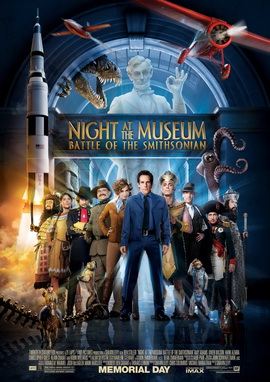 Image via Wikipedia
Image via Wikipedia"Night at the Museum 2" - A Review
Tuesday 13 July 2010
Writing a review: my thoughts
 Image by A river runs through via Flickr
Image by A river runs through via Flickr In response to a fellow writer and friend's concerns regarding writing a review (a task he is more than capable of doing) I decided to re-publish the below review for the "Dooyoo" site back in February. I hope this is useful.
In gratitude for the very kind acknowledgement made by Dooyoo this week by making me a celebrated member of the week, I thought I would give back a bit to the community. Here is a little of my background.
Thursday 1 July 2010
Replacing the Village Elder: Some Notes on the Counselling Age
In 2007 I watched a very dear relative of mine die before my eyes. We were very close and I had known him all my life. It wasn't a sudden death, but his mind had been pretty sharp up until his final hours, which made his passing anything but a relief for those around him. He loved life and lived it to the full, and was positive right up until the very end. The whole experience was horrid for all those around him. An hour after his passing we all sat in the hospital reception, giving support to his wife as the nurses on the ward went through the basic formalities. The wife was asked whether she would like some bereavement counselling. Her response was a defiant,
Wednesday 2 June 2010
Greatest Animated Fight Scenes
I’ll come straight out with it as much as I have a strong appreciation for well-plotted, well-acted, well-directed and well-produced dramas I have always enjoyed a good fight scene. What led me to like them were some of my earliest memories of TV, and these were watching cartoons like the animated series of “Godzilla”. The “Godzilla” TV series would often have at least one punch-up between the titular character of the show and some mythical or mutated beast. It wasn’t long after I became
Monday 31 May 2010
Faust creates Satan - a review of Mary Shelley's "Frankenstein"
Plot:
Arctic adventurer Captain Robert Walton happens across a desperate man who he rescues and takes on board his ship. The man, a one Victor Frankenstein, befriends the explorer who he feels an almost immediate kinship with. Hearing of Walton’s ambitions to reach the North Pole he feels moved to tell the story of how he came to be in such a dire situation hoping it will serve as a cautionary tale for the driven captain.
Saturday 15 May 2010
The Best Films Inspired by Jaws
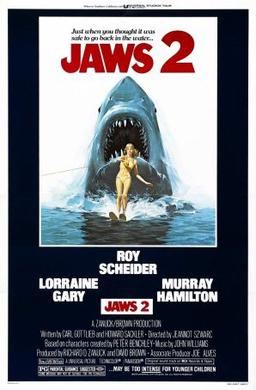 Image via Wikipedia
Image via WikipediaThe film “Jaws” has gone down in celluloid history for many different reasons. It decisively put Steven Spielberg on the map as one of Hollywood’s master directors and it initiated the summer blockbuster. A great idea is bound to inspire imitators and “Jaws” has produced a massive legacy of films that transcend genres and continue to draw in audiences from lowbrow low budget eco-horror flicks to stylistic thrillers. It is perhaps worth noting that “Jaws” was also inspired in many ways by different classics. Based on Peter Benchley’s compelling thriller of the same name, “Jaws” is quite loyal to the novel, the ending being its most significant departure. Benchley’s own novel was inspired by true life incidents relating to shark attacks, the rogue shark theory and t
Tuesday 11 May 2010
Sins of the father, sins of Man; the price of the Immortals
“Tess of the D’Urbervilles” is a classic Victorian tragedy about the life of an impoverished and virtuous Wessex country girl who becomes a victim of her society and the forces of fate. Her destiny will be both in the hands of the changeable morality of her fellow humans and the consistent forces of nature.
Thursday 22 April 2010
In memory of a teacher
Teachers are very important to me and it always sad hear about their passing. Today, 22 April 2010, I received the tragic news that Tony Hayes had died. Tony Hayes was my muay Thai kru for an intensive year of training in Warwick. During this time I travelled several times a week, had private lessons with him, represented his club at a judging course and was a part of his fortnightly "fight club". He awarded me my "Training Instructor" qualification shortly before the club closed. Below is an article I wrote for club's website - this was before my work was widely published in martial arts magazines and just before I began Clubb Chimera Martial Arts. There is a certain naivity in the writing and it reflects a time when Hayes Muay Thai was in its hayday. I haven't edited anything for fear it will take away what a good friend of mine calls "lived experience" of the time, so please forgive any grammatical errors. I offer it as my own way of remembering one of my teachers...
Thursday 8 April 2010
Pet Peeves - Coping Methods & Finding Closure
Can a person remain happy and be productive through an examination of his pet peeves? I think so. By identifying annoyances that find you all-too-often you can find a type of release in writing down your reasons for becoming irritated. It also prompts a bit of meditation on how to deal with said annoyances and, most importantly, move on. In fact, I have actually put forward some advice I have found was useful to me in dealing with them. Below is a list of the “little” things that tend to get on my wick from day to day. It’s been an enjoyable exercise for me. Don't worry if you disagree with me. Many of these annoyances are readily brought on by many people who are quite close to me, including several family members. If anything upsets you, too bad. However, as a consolation I have just provided you with a few buttons that, when pressed, will surely get my gander up. I hope you will find it interesting or even mildly amusing.
Wednesday 7 April 2010
Icon Series: Meyer Lansky - the thinking man's gangster?
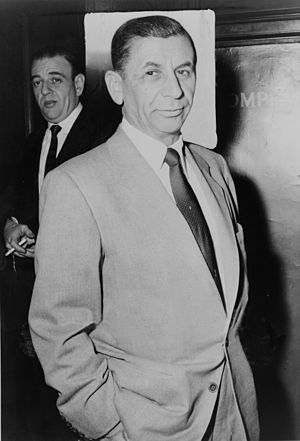 Image via Wikipedia
Image via WikipediaOf all the main icons of the Prohibition/gambling era of gangsters, Maier Suchowljansky, known as Meyer “The Brain” Lansky ( July 4, 1902 – January 15, 1983) is perhaps the most understated. In fact, he is famed for being the reserved “chairman of the board” in popular mythology.
Tuesday 6 April 2010
Black clouds in the distance for zoos
 Image via Wikipedia
Image via WikipediaBarely a week after an apparent government poll announced that a supposed “94%” of the general public wish for the “total ban” option on travelling circuses with wild animals, Angela Smith, Labour MP called for a ban on zoos. Smith is not new to the animal industry in the UK
I am often very wary of logical fallacies. The “slippery slope” fallacy is one I probably check in myself more than any other. The trouble is that everything seems to point towards a “thin end of the wedge” approach to the attack on the animals in education and entertainment culture and industry. Having read through the huge amount of written material that led up to the Animal Welfare Act 2006
Friday 26 March 2010
Black Friday for Circus
Friday 27th March will probably go down in circus history as a “Black Friday” for animal circuses. Despite there only being a small number of circuses in the UK
- Business as usual for animal circuses
- Wild animals to be travelled in circuses only under regulation
- A total ban on wild animals in circuses.
Yesterday a source leaked to me that the results to be published by DEFRA today confirmed that 94% of those who took the vote backed the total ban option. The official circus governing body, the Association of Circus Proprietors were behind the regulation option from the beginning and even drew up regulations that were submitted for the working group consultation on the Animal Welfare Act.
I for one am very sceptical about the apparent 94% backing of the ban. How does this correlate with the packed houses regularly enjoyed by the few circuses that do have exotic animals in their circuses? I think it is more than likely that those voting were rallied by the various activist groups who oppose animals in circuses. Why this was recently pushed not long before election time also makes me ponder, but I won’t go into that one.
So far there have been at least two independent scientific investigations into animal husbandry in circuses. The first one was conducted in 1989 by Dr Marthe Kyle Worthington at the behest of the RSPCA and its results were published in the book “Chiron’s World?” Despite various parts of the book often being quoted out of context or misconstrued a full reading of the book shows a general positive outlook for animal circuses and their methods. The 2006 research really summed up the essence of the issue regarding animals in circuses – a political one.
Don't forget to check out Jamie Clubb's main blog www.jamieclubb.blogspot.com
Related articles by Zemanta
- Britons back circus animal ban (telegraph.co.uk)
- Circuses facing wild animal ban (news.bbc.co.uk)
Sunday 21 March 2010
The Hazeid - Watership Down Review
 Image via Wikipedia
Image via Wikipedia
“All the world will be your enemy, Prince of a
Thousand enemies. And when they catch you, they will kill you. But first
they must catch you; digger, listener, runner, Prince with the swift
warning. Be cunning, and full of tricks, and your people will never be
destroyed.”- Richard Adam, "Watership Down"
Below are my reviews and reflections on the great book and film, "Watership Down". When it comes to literature and movie adaptations very few of the latter measure up to the former. There is no rule to how this turns out. Just because a film remains as loyal as possible to its source material, such as the graphic novel "The Watchmen" and especially "300", which was a frame-by-frame adaptation, it doesn't mean that the end result is going to be any good. Slavishly adhering to the original material almost makes the whole point of creating a film pointless. A film is a different animal to a book or even a play. In the latter case one has only to look at many of the early "talkies" and then compare them to the way cinema developed in the 1940s to see the important distinction.
Saturday 6 March 2010
In Defence of History - Book Review
In Defence of History by Richard J Evans is an effective baseline yet intellectually detailed argument for rational historical investigation. I highly recommend to anyone who has been bamboozled by the idea that history is just one person’s opinion.
Thursday 4 March 2010
My 10 Favourite Movie Soundtracks
 Image via Wikipedia
Image via WikipediaFriday 19 February 2010
Challenging Material
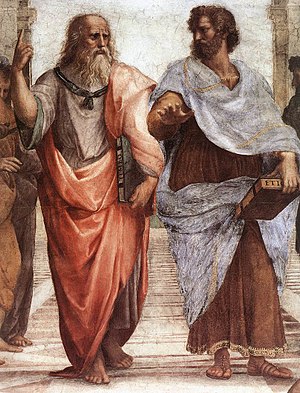 Image via Wikipedia
Image via WikipediaTimothy Leary’s “Evolutionary Agents” is not a book you would immediately associate with Geoff Thompson’s Real Combat Method. I doubt even Leary - with his leftfield views - imagined that his lucid and controversial work would become set reading material for a class training to get certification in self-defence instruction. Yet there we all stood in a circle being questioned by Geoff Thompson, himself, about our thoughts on the work.
In truth the course was far more than a simple “hard skills” course for training how to deal with a violent situation. Most of the students who went on the course already had instructor level certification in one respected realistic combative form or another. My take on Geoff’s decision for making such books s Leary’s compulsory homework for all who attended the course was because they prompted an internal battle. This is what might be termed “Cerebral Self-Defence” or, as Geoff once put it, “Self-defence is defence against the self”.
There is nothing quite like tackling what might be called “Challenging Material”. Such material is best when it scares you and it has clearly scared others in some way. It should scare you not only because it challenges your beliefs, but because in some way it reinforces them. Geoff presented us with various books that acted as such cerebral weight training material. He did not expect us to agree with all the books in their entirety it is impossible that anyone could, given the diversity of their individual philosophies but to draw positive inspiration from each and every one of them.
Generally speaking, we were all on easy footing with books like “The Gift of Fear” by Gavin De Becker a book treated like a bible in my own self-defence class and “Man’s Search for Meaning” by Viktor Frankl; however, it was clear that Yogananda’s “The Autobiography of a Yogi” would herald in the more controversial and abstract information. Out of these texts, Evolutionary Agents was one I found the biggest personal challenge.
Let’s get one thing straight, “Evolutionary Agents” is not, technically speaking, heavy reading. In fact, the first thing that impressed me about the book was the way its author got things moving from the start. In fact, the simplicity of the prose is quite daring. It is written as if the author was feverishly scrawling down his thoughts as they rushed into his mind, not stopping to take a breath and then rushing to the finish line. This might not be too far from the truth given Leary’s proud stance on the controlled use of hallucinogenic drugs, LSD in particular, to improve man’s capacity for creativity. In fact, he was part of a movement of controversial authors who aggressively promoted this theory and practice. The pace of Leary’s writing style is in line with his argument regarding pace and mobility - the back of his book states that it is not the survival of the fittest, but the survival of the fastest. He likes his play on language and gives an interesting definition for the “Human race” in this instance.
Timothy Leary goes to great pains to explain the direction all natural progression moves. His all encompassing philosophy sees everything as a race through time with all of us living in different time zones the progressive thinkers are living in the future and the rest are living in the past. He then gets quite deep into metaphors so deep in fact it gets a little difficult to decide where the metaphorical finishes and where the literal begins. Likewise his arguments vary from the genuinely original and creative to what suspiciously reads like “Shock for the sake of shock” statements. I am not completely dismissive of the obvious jolt tactic. Sometimes we need to go to extremes to re-set a balance. He is very much and consciously so in line with punk in this respect. However, it didn’t take long in my first reading of “Evolutionary Agents” to really feel the bite of his elitist argument. At this stage I feared that what I was reading was typical 1960s undergraduate academia at its most masturbatory. I had become aware that I was reading challenging material.
As I read on I discovered that there was plenty to support my fears. Despite preaching the importance of mobility towards the future, there was clear and unashamed nostalgia for the values of “The Age of Aquarius”. Leary makes it clear in his writings that the greatest advancements in creativity occurred between 1960 and 1980, not surprisingly his era, and he sees California as being a migratory Mecca California
My answer is that I don’t know, but one thing I did find despite all this was that “Evolutionary Agents” is an inspirational read. It inspires because it provokes and motivates at the same time. Like Ayn Rand, another hugely influential writer who has also been accused of being a founder of a “cult of personality”, Leary’s main focus is on developing the individual and breaking away from the conventions of society. He has fascinating metaphors to describe the insect-like castes that humans create to keep people from progressing as individuals. Looking at all human behaviour in animalistic terms is quite valid and nothing new. The great anthropologist, Desmond Morris, wrote some very accurate findings on the way humans act in a group in his “Naked Ape” and “Manwatching” books. Leary may not follow an orthodox biological route on this one, but I completely agree that humans generally follow what he calls a “hive” mentality. Those who break away from these castes are what Leary calls “outcastes” – another play on words – and are the pioneers of the future. History certainly backs Leary up on this one. Single individuals who have gone against the norm of the day and stood hard and fast to their principles are those who have affected some of the greatest changes. They have shifted the paradigms of their time and changed our perceptions.
Changing perceptions; now this is a common theme running through the discussions conducted on the Geoff Thompson course. Around the time when I was seriously considering giving up reading Evolutionary Agents or, at least, skimming it, I arrived at his “Correspondence Theory”. This actually reinforced a belief I have had for a long time that everything is connected and that it is a crime to completely break with the past. There is so much we can learn through history and valid foundations for the future are laid there. This is a fairly sound principle and makes more sense, at least on a metaphorical level, with the rest of his theories. Angela Carter Around the time I completed the Geoff Thompson instructor course I read a short book entitled “The Sadeian Woman” by the feminist author, Angela Carter. The book is perhaps one of the bravest I read in a long time. In The Sadien Woman Carter takes on Sade’s philosophy and not only draws positive ideas amid the scenes of extreme pornography that include torture, rape and a nihilistic approach to life, but actually finds the great libertine’s limit. This is no easy task. Sade is very hard reading and I don’t mean that in a “War and Peace” or “Paradise Lost” deeply profound way. If Timothy Leary’s books are written in a fast-paced style that easily pulls you along, Sade’s are long winded affairs that just seems to catalogue as many perversions and contentious ideas as possible. Having said this, his Libertine characters do have many parallels with Timothy Leary’s Outcastes and Ayn Rand’s Objectivists. After all he is presenting a philosophy that champions hedonism, like Leary, and selfishness, like Rand . Interestingly Ayn Rand has one character describe the hero of her “The Fountainhead” novel as “The Marquis De Sade of architecture”. Angela Carter does not react with a counter-argument or the condemnation that many other feminist authors have done when they discuss Sade. Instead she discusses how his heroines, Justine and Juliette, are prototypes for the twentieth century image of women. Sade’s heroine Justine, of the book of the same name, who is punished throughout her whole thankless life for trying to be virtuous, is seen as the forerunner for the inoffensive and vulnerable blondes of the media like Marilyn Monroe. Likewise Justine’s sister, Juliette, who is rewarded for her crimes of survival and indulgence, is described as the prototype for the career women of the 1980s.
“Evolutionary Agents” was the first material in a long while that exposed my personal prejudices. I don’t like to pigeonhole myself as anything, but I guess I am, roughly speaking, agnostic and sceptical in my beliefs and philosophies. I guess this has come about from often wanting to be objective, open-minded and having more than the average person’s experience with charlatans. Therefore books like Leary’s and another book on our list, Joe Vitale’s “Zero Limits” are immediate foils for me to exercise my principles and progress my thinking. The experience is never comfortable, but once you find a connection somewhere in the work – an “energy” as some might say – it becomes quite compelling.
However, it is in his play “Philosophy in the Bedroom” that Carter actually finds that De Sade will only go so far. She demonstrates that far from having the sensuality usually associated with erotic fiction it is all rather mechanical and the orgy that is mainly described by the players comes across as a sort of aristocratic parlour game regimented and anything but free. The play culminates in a scene clearly designed to derive the most shock possible the rape and torture of a mother by her daughter. However, it is during this act that Carter sees that Sade will only go so far the great libertine actually does fear genuine chaos and pulls back. It is this one crucial moment, where many a reactionary critic would have missed in their rising disgust for the horrendous acts being committed, that Carter really goes that stage further as a literary feminist. She effectively challenges Sade - a man whose work was far more sexually explicit than anything the controversial DH Lawrence would write and far more aggressively anti-religious than the Oxford
During our course Geoff spoke of a short film he recently completed and was soon to be distributed called “Romans 12:20″. The film deals with that most loathed and feared of crimes in our society, child abuse, and using the particular verse from the New Testament it offers forgiveness as the only real way the abused can successfully claim revenge. Geoff predicts it will be met with opposition and that it is a controversial idea, but he believes in its worth. Keen readers of Geoff’s work will see that it has a strong connection with his autobiography “Watch My Back”, where he described the abuse he suffered as a child and his adult confrontation with his abuser. I feel it will challenge those who consider themselves to truly be Christians and perhaps spark debate on the nature of forgiveness is it another hidden example of true selfishness and even a type of positive revenge?
We need material that challenges us if we are to progress. As the celebrated martial arts and sometimes controversial self-defence instructor Mo Teague regularly says, “We need traction to move forward”. The challenge can come in many different ways, but I think it is important that it addresses an area we feel fundamentally weak about or we haven’t developed. I think this is not a million miles away from the Stephen R. Covey principle regarding empathetic listening. If we do not listen, read or face something that makes us feel uncomfortable we allow that thing to become an insurmountable obstacle. Also we allow unnecessary prejudices to feed our ignorance and handicap us from understanding more about our fears. My personal take on what stops certain people from looking into things that scare them is that they worry it will change them. This is the best reason to take on the fear. If your principles are so fragile that you fear for their strength before you have even faced the very thing that frightens you then maybe it is time you looked at those principles.
Further Reading:
If you enjoyed this article please vote for it on Helium
Don't forget to check out Jamie Clubb's main blog www.jamieclubb.blogspot.com
If you enjoyed this article please vote for it on Helium
Don't forget to check out Jamie Clubb's main blog www.jamieclubb.blogspot.com
Subscribe to:
Posts (Atom)



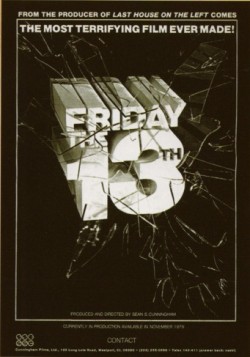

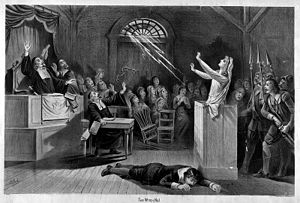






![Reblog this post [with Zemanta]](http://img.zemanta.com/reblog_e.png?x-id=d9c62051-35db-4e46-b2d8-00091fdb411e)
